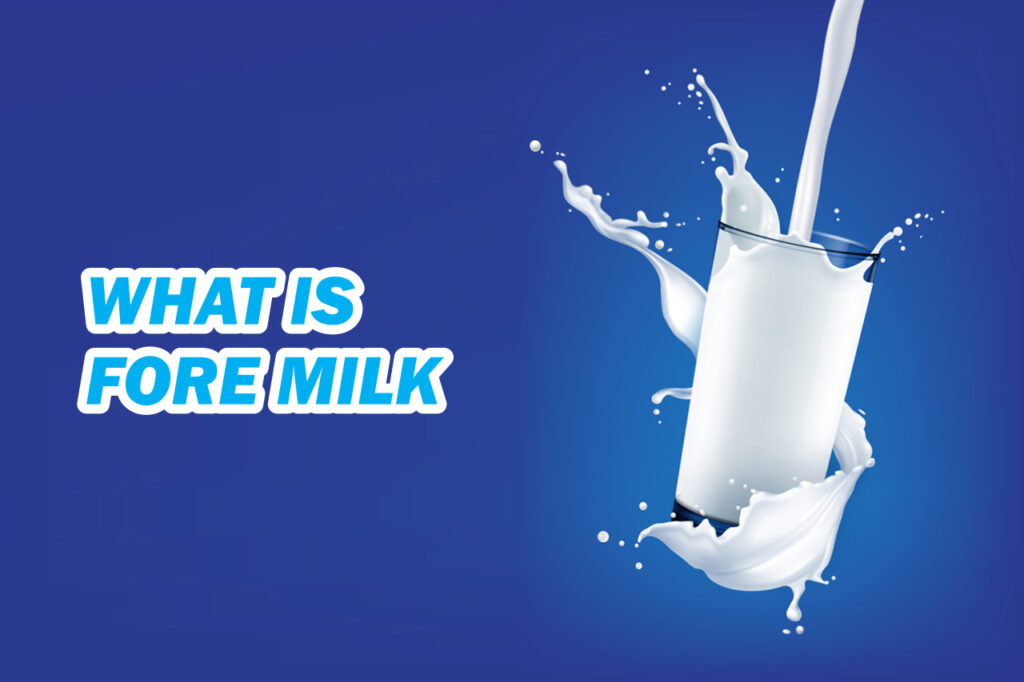When a baby is born, the mother’s breast milk is the first food that provides nourishment to the baby. Creating foremilk for babies is a common thing between all mammals. This milk contains nutrients that boost immunity and empowers the baby with life-sustaining goodness
A cow’s milk is the next best substitute for your baby after your own breast milk. A cow’s milk contains almost all of the nutrition that your baby needs for growth and development. This milk is often categorized as foremilk and hindmilk. What’s the difference between them? Is one better than the other? Let’s find out.
What is foremilk?
Foremilk is the first milk produced when you milk a cow. This milk is watery and has a low concentration of fats and calories. Foremilk is high in lactose (natural sugars). After a few minutes of nursing, the milk starts to get thicker, and denser. This is called the hindmilk.
The milk-producing cells are located deeper, where most of the dense, rich milk is produced. Hindmilk has a much lower concentration of water and lactose and has a relatively higher concentration of proteins and nutrients when compared to foremilk. The longer you wait between each milking round, the higher will be the quantity of foremilk that is produced.
Foremilk vs hindmilk imbalance
Foremilk is suitable for babies and is completely safe, as long as there is no foremilk-hindmilk imbalance. This imbalance refers to a situation where your baby is feeding on too much foremilk, and not getting sufficient hindmilk.
For an experiment, keep a cow’s freshly collected milk in two separate containers, one collected during the first 15 minutes while the remaining collected later during the milking process and let these containers sit for a while. After about 45 minutes to an hour, you will see a noticeable difference between the two containers of milk. The milk collected during the first 15 minutes would be clear, liquidy and will have a thin layer of milky white fat on the top. This is the foremilk. The milk collected later would be almost completely milky white, with a thin layer of fluids at the bottom, which is the hindmilk. This visibly demonstrates the different nutrition available in these two kinds of milk.
Baby’s who nurse on excessive foremilk get hungry more often. They may end up overeating, which causes additional problems. The excessive lactose sugars in the foremilk may cause Gastrointestinal problems in infants. These may range in issues like abdominal pain, crying, and irregular bowel movements.
Should my baby have foremilk?
It is worth noting that foremilk is perfectly nutritious and healthy for your baby when taken in balance. This is also an essential source of lactose. As your baby feeds, they adjust this balance automatically. For most mothers, a foremilk-hindmilk imbalance is a temporary phenomenon, one that goes unnoticed.
Foremilk only causes a problem when your baby is deprived of getting hindmilk over an extended timeframe. Let’s take a look at this imbalance, and how you can solve it.
Solutions to balance your baby’s nutrition
If you suspect that your baby is getting too much foremilk, here are a few things you can do to restore the balance –
- Let your baby dictate the feeding process. Baby’s have an inbuilt sense of hunger. Setting a time limit for feeding might hamper the nutrition your baby gets.
- Make sure that your local milk supplier collects milk which is a good balance of foremilk and hindmilk. Fresh cow milk is an excellent option for feeding newborn babies.
- Try switching up your feeding positions. If your baby can’t eat while lying down, sitting upright might help them to feel better.
- Don’t let your baby switch bottles very quickly. Ensure that they finish one bottle and that they drink an adequate quantity of milk every day.
- Feed your baby before they become excessively hungry. This will reduce the time between feeding intervals, and also help the baby to stay calm and feel better.
- If you suspect that your baby is still hungry or not getting enough nutrition, visit your paediatrician.
Here are some signs to watch out for-
- If your baby is passing green stools.
- If your baby is cranky and irritable just before or after a feeding.
- If your baby is feeding too often.
- If your baby has any abdominal pain or gassiness while passing stools.
- If your baby doesn’t seem to be gaining a healthy weight.
These are the top red flags to indicate an overdose of foremilk and lack of hindmilk in your baby’s nutrition. It’s important to immediately consult a doctor as early as possible, to get the best treatment.
Conclusion
Cow milk is an excellent substitute for baby food. However, you must feed your baby only pasteurized and hygienically collected milk that is a good mix of foremilk and hindmilk. It can be frustrating to determine if your baby is getting enough foremilk. You’ll have to try experimenting for a while before getting the feeding process exactly right.

